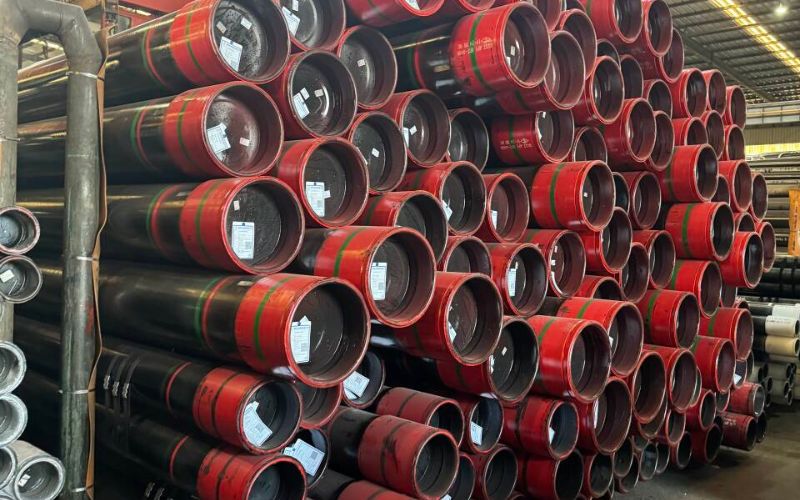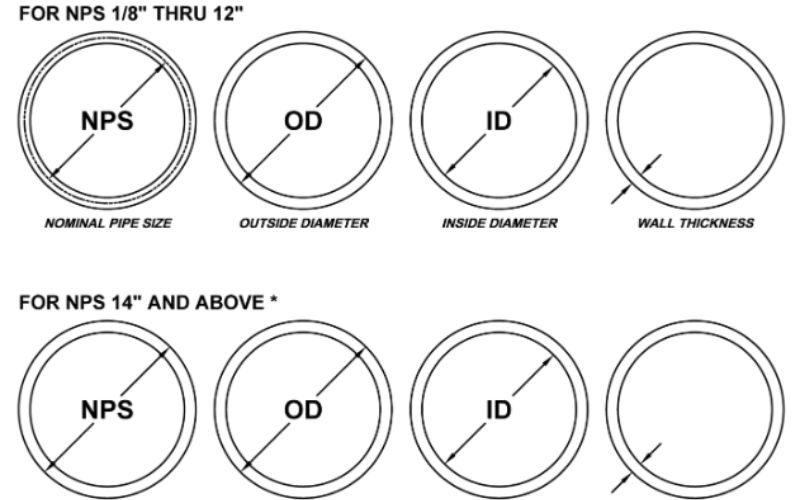Steel is the backbone of modern infrastructure; it is imperative to choose the proper grade to ensure extended life and performance. Among the several choices provided in the market, ASTM A709 Grade 50 holds the position of a high-strength, corrosion-resistant steel plate used for structural purposes in bridges and some other load-bearing structures. So what distinguishes this spec, and why is it favored by engineers and architects? This blog examines Steel Plate Specification 36/50 and explores the properties, advantages, and specific applications of ASTM A709 Grade 50. Whether you are initiating a project or simply want to enrich your construction material knowledge, this guide is set to provide you with the necessary insight for working smarter. Stay connected as we explore why this particular grade of steel is a wise and economical answer to the current infrastructural problems.
Overview of Steel Plate Specifications
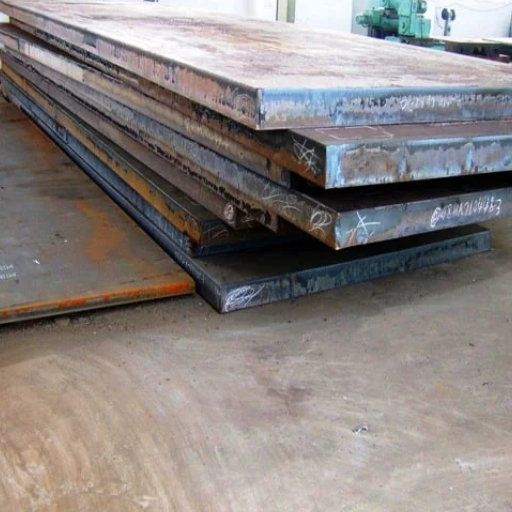
The steel plate specification basically gives the standards and properties required for various grades of steel for use in construction and engineering work. For instance, ASTM A709 grade 50 is a high-strength low-alloy steel considered structural steel with weldability and corrosion resistance. This meant it was introduced for bridge construction and other infrastructure works where it became an ideal candidate to be used. It is designed to withstand harsh environmental conditions and carry heavy loads, thus fulfilling the requirements of present-day construction standards.
Introduction to Steel Plate Specifications
Steel plate specifications serve to identify whether steel products are suitable for certain applications, which could include construction, manufacture, and engineering. Steel plates are graded depending on chemical composition, mechanical properties, and use, so that engineers and contractors might choose a material suitable for their projects. Commonly accepted specifications include ASTM, EN, and JIS standards, which impose quality and performance requirements under stringent scrutiny.
For instance, ASTM A36 is a very widely used carbon structural steel specification. The A36 specification is desirable for standards of strength, weldability, and general versatility. The minimum yield strength is generally 36,000 psi for A36 steel, which provides enough strength for structural applications. Conversely, ASTM A572 covers high-strength low-alloy steel plates with grades ranging, for example, to Grade 50. Such grades may reach yield strengths of 50,000 psi or more, thereby offering superior structural support for heavy construction, bridges, or load-bearing applications.
More steel specifications include ASTM A516, which is in force for pressure vessel-ready steel plates. These plates are widely used in the construction of boilers, among other applications, at high temperatures. The grades 55, 60, 65, and 70 indicate varying abilities to withstand pressure and stresses, with tensile strength reaching up to 70,000–90,000 psi in Grade 70 steel, depending upon the thickness of the plate, guaranteeing that the steel will remain utterly reliable in critical systems.
For installations that require enhanced resistance against corrosion, such as marine or industrial environments, ASTM A588 is a well-known steel specification. It provides atmospheric corrosion resistance owing to its unique alloy composition that develops a protective patina over time. That is, it is an excellent sustainable and cost-effective choice for infrastructure exposed to weathering.
To properly select the steel plate for each particular purpose, one must establish the differences between these specifications and their grades in terms of safety practice and efficiency in accomplishing the application at hand. The continuing update of these specifications confirms that modern industries keep changing and signals the fact that steel still remains the most adaptable material for engineering.
Importance of ASTM Standards
ASTM standards play a crucial role in creating uniformity, safety, and quality standards for industries that depend on materials, products, systems, and services. These constituent standards are universally acknowledged and imposed as measures of performance and reliability. For instance, the industries of construction and manufacturing rely on ASTM standards to determine whether materials, including steel, concrete, and polymers, meet stringent safety and serviceability guidelines.
An excellent example is ASTM A36 specification for carbon structural steel plates for bridges and buildings. Engineers reference this specification to ensure uniformity in mechanical properties like yield strength (minimum 36,000 psi) and tensile strength (58,000 to 80,000 psi). The existence of such standards ensures an adequate level of structural soundness for large projects.
ASTM fosters innovation and enables trade across borders through the harmonization of technical requirements. There are over 12,000 ASTM standards in use worldwide today, which display their importance in global commerce and industrial development. As a testament to their versatility, however, these standards are also implemented by the aerospace, automotive, and energy industries to meet regulatory compliance and increase safety.
ASTM standards are continuously evolving to stay front-line concerning emerging technologies and ensuing challenges, offering all related stakeholders a reliable means to ensure quality and remain competitive in fast-moving markets.
What is ASTM A709?
ASTM A709, the ‘Standard Specification for Structural Steel for Bridges,’ is a paramount construction guideline for bridge-making and allied works. This standard covers carbon and high-strength low-alloy steel structural shapes, plates, and bars for use in bridge works where strength, durability, and resistance to environmental factors are of utmost emphasis. The specification stresses lots of requirements-the mechanical properties, chemical composition, and performance of materials under various environmental conditions.
The standard further ranks steel into grades such as A709 Grade 36, 50, 50W, and HPS Grade (HPS 50W, HPS 70W), each having characteristic structural and environmental adaptations. For instance, weathering steel grades such as 50W and HPS 50W give added resistance to atmospheric corrosion, allowing for cheaper maintenance with time. HPS grades then enhance strength-to-weight and toughness ratios, which, in fact, strengthens modern bridge concepts wherein efficiency and cost of longevity come into consideration.
ASTM A709, in fact, calls for Charpy V-notch impact testing to qualify steel for important functions so that it can face extreme temperatures. Thus, the use of this standard makes it an appropriate part of infrastructure projects in guaranteeing that the steel “hold together” under stresses and climates. Because it offers options and tolerates tough engineering requirements, ASTM A709 continues to be the standard with which engineers and construction professionals look for steel that stands the test of time.
ASTM A709 Grade 50 Steel
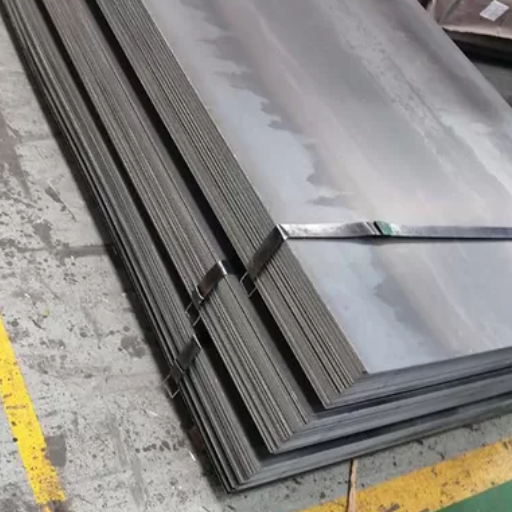
ASTM A709 GRADE 50 Steel is a high-strength, low-alloy structural steel primarily used for bridges and other structures. It offered great strength, durability, and resistance to atmospheric corrosion. It was created to withstand forces in various environmental conditions and is reputed as being able to withstand stress and weathering, being the structural steel of choice in high-critical applications.
Chemical Composition of A709 Grade 50
The chemical composition of ASTM A709 Grade 50 steel is carefully engineered to ensure its strength, resilience, and resistance to corrosion. Below is an outline of the typical composition of this alloy:
- Carbon (C): 0.23% maximum
- Manganese (Mn): 0.50–1.50%
- Phosphorus (P): 0.035% maximum
- Sulfur (S): 0.035% maximum
- Silicon (Si): 0.15–0.40%
- Copper (Cu): 0.20% minimum (optional for enhanced corrosion resistance)
- Chromium (Cr): 0.45% maximum
- Nickel (Ni): 0.40% maximum
- Molybdenum (Mo): 0.15% maximum
- Vanadium (V): 0.01–0.15%
- Columbium (Cb, also known as Niobium): 0.005–0.05%; often used for grain refinement.
Each element is precisely balanced to enhance specific properties of Grade 50 steel. For example, the inclusion of manganese contributes to the material’s strength and toughness, while silicon aids in improving structural stability. Copper is sometimes added to provide additional atmospheric corrosion resistance, making Grade 50 especially suitable for environments exposed to moisture.
These specifications ensure that ASTM A709 Grade 50 meets industry standards and delivers reliable performance in demanding structural applications.
Mechanical Properties of A709 Steel Plate
ASTM A709 steel plate is engineered for high-performance structural applications, offering a balanced combination of strength, ductility, and toughness. The following properties highlight the key mechanical characteristics of A709 Grade 50:
- Tensile Strength: The steel exhibits a tensile strength of 65,000 psi (450 MPa), enabling it to withstand significant stress before breaking. This property is essential for load-bearing structures like bridges and buildings.
- Yield Strength: A minimum yield strength of 50,000 psi (345 MPa) ensures the material can endure substantial deformation without permanent damage, making it ideal for heavy-duty use.
- Elongation: The plate demonstrates a minimum elongation of 18% in a 2-inch gauge length for plates under ¾ inches thick. This high elongation emphasizes its flexibility and energy absorption under stress.
- Impact Resistance: To support use in environments subjected to fluctuating temperatures, A709 Grade 50 provides excellent notch toughness at low temperatures. This resistance ensures stability and reliability in both cold climates and extreme settings.
- Weldability: The material’s chemical composition promotes superior weldability, allowing easy fabrication without compromising structural integrity.
These mechanical properties make ASTM A709 Grade 50 a dependable option for infrastructure projects that demand resilient, long-lasting materials in challenging environments.
Comparison with Other Steel Grades
ASTM A709 Grade 50 can be said to hold a methodology in the center of strength, application possibilities, and environmental adaptability. Consider ASTM A36, a regular carbon steel: it combines fair weldability but falls short of the high-strength capabilities of Grade 50. While giving a tensile strength of 58-80 ksi, Grade 50 goes beyond this tension if 50 ksi is set as the lowest yield strength and so better suited for load-bearing structures and harsher conditions.
With ASTM A572 Grade 50, another high-strength low-alloy steel of the old reputation, ASTM A709 Grade 50 offers further advantages in toughness and weathering properties as cemented for bridge construction and similar uses. While of the same yield strength, ASTM A709 Grade 50 has enhanced corrosion resistance to endure variable environments better.
On the other hand, weathering steels like ASTM A588 are intended solely for atmospheric corrosion resistance; ASTM A709 Grade 50 is as concerned about weldability and fracture toughness, making it suitable for exposed applications of a critical nature. ASTM A709 Grade 50T, the toughness-enhanced type, is the one to opt for when enhanced resistance to cyclic stress or subzero temperatures is essential.
Such distinctions clearly mark ASTM A709 Grade 50 as a high-performance steel, especially tailored for demanding infrastructure projects, ensuring that the steel, though high-performing in itself, can be used for a couple of other purposes requiring strength and safety over a long period.
Applications of ASTM A709 Steel Plate
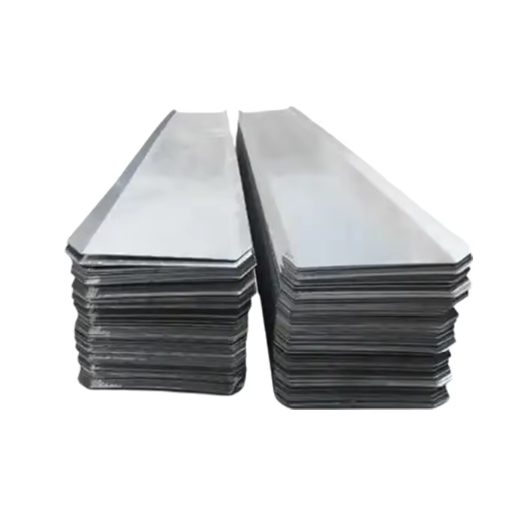
ASTM A709 steel plate is a popular choice for bridge building and other structural applications where strength and durability are paramount. Some of the chief applications are as follows:
- Bridge Construction: It is suitable for girders, supports, and other structural components of highway and railway bridges.
- Structural Projects: It is used in the construction of buildings and any structure where high performance under tough conditions such as adverse weather or heavy loading is an issue.
- Marine Infrastructure: The construction is very commonly carried out for piers, docks, and other waterfront structures susceptible to environmental stressors.
In essence, these applicability scenarios highlight the versatility and reliability that ASTM A709 steel plate brings to several demanding engineering and infrastructure projects.
Structural Applications in Construction
ASTM A709 steel plate has a major role in the modern industrial construction-the providing strength, durability, and versatility for different structural requirements. Bridge construction is the primary use for this material, where it must meet rigorous requirements concerning load-carrying capacity, vibration resistance, and long-term durability. For example, ASTM A709 Grade 50W is often used for its weathering resistance, thereby minimizing maintenance costs in the long term.
In high-rise structures, this steel offers the necessary structural integrity to resist large vertical and lateral forces coming from wind or seismic activities. According to research, high-performance steel like ASTM A709 could allow a structure to resist loads up to 15-20% better than conventional steels, thus ensuring greater safety and a longer life span.
Moreover, steel ensures best performance under dynamic loading prescribed to withstand the heavy traffic offered by railway and highway bridges. Along waterfront structures, the steel’s resistance against the corrosion of saltwater and marine atmospheres enhances the longevity of the structures, thereby lowering the frequency of maintenance work. These traits have made ASTM A709 steel plate a valued material at the sculpting of sustainable, resilient and innovative construction projects all around the world.
Use in Bridge Construction
A709 steel plate has entered the realm of standard materials in the construction and designing of modern bridges owing largely to its strength, toughness, and flexibility. Bridges made from this high-strength steel have the ability to undertake normal traffic and untoward stress situations like severe weather conditions or earthquakes. In addition, the incorporation of high-performance grades such as HPS 70W provides a high level of durability, often far surpassing the yield strength of traditional steel at around 70 ksi.
Corrosion resistance features, especially in such environments are pertinent in the presence of moisture or de-icing salts. According to structural standards, bridges in coastal areas built from ASTM A709 steel can have their maintenance intervals extended by up to 30% when compared to conventional materials. The weldability and formability of this steel make it easier for fabrication and assembly, resulting in reduction of time taken during installation at site, hence, lowering overall costs.
It is glass through reports from the industry that ASTM A709 steel lowers the overall lifecycle cost of bridges. As an instance, some studies have cited that with adequate maintenance, bridges consisting of this type of steel can have a service life of over 75 years, thus supporting sustainable infrastructure investment. Its composition furthermore complements modern trends of design for lighter and more efficient structures without any compromise on safety or performance. Thus, moving forward, ASTM A709 steel will be one of the critical materials in developing resilient bridge infrastructure across the world.
Other Industrial Applications
ASTM A709 steel has proven to be highly versatile in areas of application beyond bridge building. Its unique combination of strength, corrosion resistance, and weldability makes it a preferred material within the railway, marine, and energy industries. In the rail industry, this steel is highly sought after for manufacturing railcar beams and structural tracks, which must endure heavy wheel loads for long periods. The ability to resist weathering degradation guarantees long performance through extreme weather conditions.
With the marine industry taking advantage of ASTM A709 steel’s corrosion resistance, this service includes shipbuilding and offshore structures exposed to severe saltwater environments. Platforms and vessels built with this material are known for their long-term advantages with less maintenance, thus saving fortunes in the long run. In the energy field, particularly wind turbine and power plant construction, this steel resists harsh environmental loads and guarantees the stability of the energy production system.
Recent statistics show that maintenance costs for different industries have decreased by 25-30% on average while operational efficiency is enhanced by the use of ASTM A709 steel. These characteristics make it a very important material for sustainable, durable, and creative industrial solutions.
Comparative Analysis: A709 vs. A572
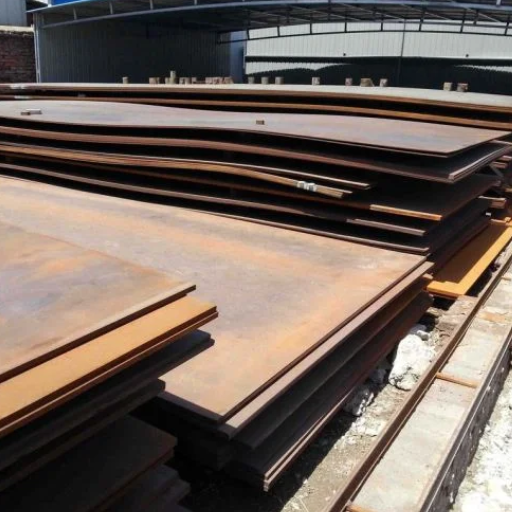
A709 is tailored for bridge construction with enhanced toughness and corrosion resistance, while A572 is a versatile, cost-effective option for general structural applications.
|
Parameter |
A709 |
A572 |
|---|---|---|
|
Application |
Bridges |
General |
|
Yield (ksi) |
50 |
50 |
|
Tensile (ksi) |
65+ |
65 |
|
Toughness |
High |
Moderate |
|
Corrosion |
Weathering |
Coating needed |
|
Testing |
Strict |
Basic |
|
Cost |
Higher |
Lower |
|
Availability |
Limited |
Broad |
Key Differences between A709 and A572
When comparing ASTM A709 and A572 steels, both are recognized for their high strength and wide range of applications; however, they serve distinct purposes and meet varying requirements.
- Composition and Standards
ASTM A709 steel is specifically engineered for structural applications in bridges and heavy construction. It includes enhanced chemical composition for improved toughness and weldability, designed to withstand environmental conditions such as vibration, stress, and varying temperature ranges. On the other hand, ASTM A572 is primarily used for structural support in general construction and is valued for its excellent strength-to-weight ratio, often utilized in structural applications like buildings, equipment frames, and towers.
- Tensile Strength and Yield Strength
Both grades offer high strength, but there are noticeable differences in their performance ranges. For example, a common grade of A709 (Grade 50) has a yield strength of 50 ksi (345 MPa), matching A572 Grade 50 in similar applications. However, A709 includes other grades, such as HPS (High-Performance Steel) 70W, which can reach yield strengths of up to 70 ksi (485 MPa) while offering exceptional durability under extreme conditions, making it ideal for critical bridge structures.
- Durability and Weather Resistance
One defining feature of A709 steel, particularly in Grades 50W and HPS 70W, is its weathering steel properties. These grades form a stable oxide layer that resists corrosion, significantly reducing maintenance and expected material degradation in outdoor environments. A572 steel, while not inherently weather-resistant, is often coated or treated to achieve similar protection when used outside.
- Applications and Performance
A709 steel is designed with bridge construction in mind, offering excellent toughness and fatigue resistance to manage heavy loads and dynamic forces from traffic. A572, while versatile across a broad spectrum of structural applications, lacks some of the advanced properties necessary for the demanding load resistance and environmental tolerance required in bridge applications. For instance, bridges designed with A709 steel can endure years of service with minimal maintenance, even in climates prone to harsh weather.
- Cost and Availability
A572 steel is commonly used across industries due to its affordability and accessibility. It is a cost-effective choice for general structural needs. Meanwhile, A709 steel, with its specialized grades and properties, tends to cost more but delivers unmatched performance in bridge construction and similar high-stakes projects. Notably, infrastructure investments aimed at improving longevity frequently favor A709 because of its lifecycle cost savings by reducing the need for repairs and replacements.
The superior technological advancements of A709 steel, particularly the HPS grades, make it a standout choice in critical infrastructure. However, for projects with less stringent performance demands, A572 steel provides an affordable and reliable alternative. Strategic selection of the appropriate material should be based on specific project requirements, balancing performance, durability, and budget considerations.
Which Grade to Choose for Your Project?
In choosing a steel grade for my project, I have to consider the requirements of the application. If a structure is supposed to grant more durability and offer resistance against environmental factors, I will opt for ASTM A709; especially, bridges fall under that category. Should economy and high strength be considered for general construction, then typically A572 becomes my choice. With all that said, factors like environmental setup, load requirements, and cost come first when decision-making.
Performance in Different Environments
Selecting building materials must involve issues related to their performance under certain environmental conditions. ASTM A709 is made for corrosion resistance. Hence, it is widely used in construction wherein harsh environmental conditions prevail, such as in marine or coastal atmosphere, where salts and moisture accelerate deterioration. Great weathering capabilities lessen maintenance and thereby increase the service life, making it promising for infrastructure projects designed for the long term like bridges or overpasses.
On the other hand, ASTM A572 differences would imply a higher strength-to-weight ratio. It is, therefore, highly suitable for situations where environmental exposure is not harsh but structural demands are heavy. While A572 performs very well in dry or controlled atmospheres, it strikes a balance between structural integrity and cost. It is generally used in standard applications such as commercial buildings and non-critical infrastructures where weight reduction and high load-bearing capacity are required.
It was discovered that this weathering steel type in A709 can prolong the lifespan of certain structures to the tune of 50% in corrosive environments, whereas A572 has tensile strengths between 50 to 65 ksi, making for tough designs within the realm of typical construction practices. Where environmental challenges such as extreme temperatures, humidity, or chemical exposure come into play, making an informed choice between the grades becomes essential for maximizing durability, safety, and return on investment over the long haul.
Trends and Advancements in Steel Plate Specifications
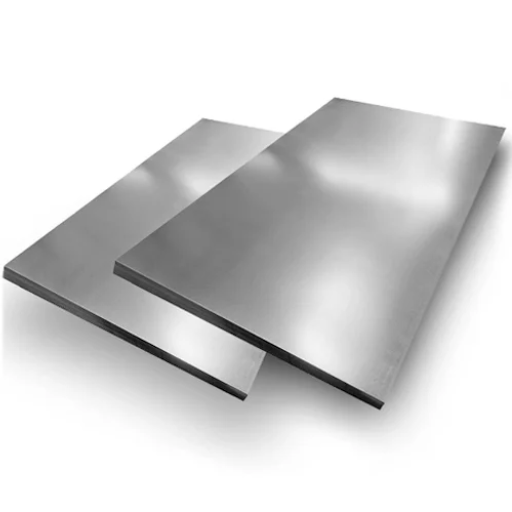
The steel plate specification field is currently undergoing changes in favour of sustainability, higher performance, and suitability for present-day construction. Developments in the field have led to the formulation of high-strength, low-alloy (HSLA) steel plates with better strength-to-weight ratios, weldability, and ductility than conventional carbon steels. Further, improvements have also been made with respect to manufacturing processes that ensure greater freedom from defects, better control on thickness, and increased efficiency with respect to material consumption. The interest in corrosion-resistant grades such as weathering steels for extending service life in severe environments is on the rise. These changes in the trend show how industries are conscious of making materials that serve both durability and environment.
Emerging Technologies in Steel Manufacturing
Steel production has been witnessing technological breakthroughs, with newer technologies allowing much smarter and sustainable production processes. One major innovation is the infusion of AI and machine learning into steel plants. AI algorithms are used for the predictive maintenance of equipment so as to minimize unplanned downtimes by checking sensor data to detect early signs of equipment failures. Such enhancement in operational efficiency may translate into saving millions of dollars annually in operating costs and also promote workplace safety.
Another important development is hydrogen use as a replacement for carbon in steelmaking, popularly referred to as green steel technology. These methods offer far lesser CO<sub>2</sub> emissions than the traditional method of the blast furnace and thus become a critical pathway for realizing the net-zero carbon goal. For example, the Europeans, in the steel industry, have claimed that using hydrogen-based steel production could cut emissions by 90%.
Furthermore, additive manufacturing or 3D printing is reshaping the steel industry, wherein complex steel parts can be produced with minimum scrap. The applications of 3D-printed steel components extend through sectors like aerospace, automotive, etc., providing great precision and durability while shortening production time.
Additionally, implementation of Industry 4.0 technologies, such as IoT and smart manufacturing systems, is setting up steel plants as fully integrated ecosystems working seamlessly together. They provide real-time production line monitoring, which optimizes not only resource consumption but energy consumption as well. For instance, energy-intensive processes can be monitored through Sensors and IoT-enabled systems, allowing manufacturers to reduce their power consumption by nearly 20%.
Together, these innovations drive not only efficiency and quality but also sustainability initiatives at a global level, highlighting the increasing relevance of the steel industry in building a greener future.
Impact of Sustainability on Steel Production
Sustainability brought profound changes into steel production, reshaping priorities and practices in the industry. A key development in this regard is the shift toward low-carbon steelmaking processes through green hydrogen generation, employed instead of fossil fuels. Studies suggest that such a use of green hydrogen could cut down up to 90% of CO2 emissions from steel production, which would mark a tremendous acceleration of the industry toward carbon neutrality.
Simultaneously, the EAF technology is setting the stage for an energy-efficient method to recycle scrap steel. In contrast to the basic oxygen furnace, EAF could emit up to 75% less greenhouse gases per ton of steel, rendering recycling and circular economies bedrocks of sustainable steelmaking.
With increased demand, another pivotal step in the chain has been the proliferation of Carbon Capture, Utilization, and Storage (CCUS). CCUS can capture up to 90% of CO2 emissions from steel plants, with the captured carbon either being utilized for industrial purposes or being stored securely underground. By deploying these technologies, steel producers are striving to solve their environmental dilemmas while adhering to some of the toughest emissions targets worldwide.
Demand for sustainably produced steel is also fueled by construction and automotive industries, with firms requiring low-carbon materials to comply with environmental regulations and meet consumer expectations. It is noteworthy that some reports have even suggested that the demand for green steel could comprise more than 30% domestically by 2050, thereby setting the tone in the market toward eco-friendly practices.
These are concepts trending further with investment into renewable power generation. The majority of makers have pledged to power their operations using renewable energy, mainly relying on wind and solar, thus curtailing any indirect emissions associated with electricity consumption. Together, these initiatives demonstrate that sustainability is bringing in a paradigm shift within steel production and, in the process, is shifting the industry toward the realization of global climate goals, innovation in particular, and growth at large.
Future of High-Strength Steel Plates
Being innovative and sustainable has now taken centre stage in a number of industries, opening up a wide space for remarkable growth opportunities for high-strength steel plates. These plates are fast becoming major players in construction, automotive, and energy sectors that require lightweight properties and durability. As an instance, the global high-strength steel market is expected to grow at an approximate compound annual growth rate (CAGR) of 8% from 2023 to 2030, driven by the demand for lightweight materials, which boosts fuel efficiency while lowering emissions.
Technological transformations are running along this line. By means of newer alloys and methodical manufacturing processes, the new generation of ultra-high-strength steel plates finds being flexible in form, weldable, and resistant to corrosion. These attributes make them extremely valuable for erecting durable infrastructure, high-performance cars, and wind turbines.
This evolution is also powered by the digital transformation of manufacturing processes for high-strength steel plates. Smart manufacturing based on AI and IoT makes for instances of real-time monitoring, optimizing material efficiency, and cutting down energy consumption during production. The benefit, in turn, is product quality enhancement and a step in line with sustainable development with a reduced carbon footprint for the steel industry.
In essence, with the world’s industries laying down pathways to cleaner and more efficient technologies, advanced high-strength steel plates are placed for a demand boom. They will, for sure, remain pillars upon which performance, environmental consciousness, and innovative design solutions stand for in the future.
Reference Sources
- Development of 420 MPa Grade High-Performance Steel Plate for Wind Power
- Authors: Jing Tian You et al.
- Published: December 13, 2024
- Summary: This study discusses the development of a high-performance EH420 steel plate designed for wind power applications. The authors employed a composition design with low carbon equivalent and mechanical metallurgy technology to achieve a yield strength exceeding 420 MPa and an impact energy of 195 J at -40 °C. The ultrasonic inspection quality met the S2E3 requirements of the European EN10160-1999 standard, and the welded joints exhibited exceptional properties across various welding heat inputs.
- Methodology: The study utilized mechanical metallurgy techniques and composition design to develop the steel plate, followed by rigorous testing for mechanical properties and ultrasonic inspection(You et al., 2024, pp. 103–108).
- Investigation of Steel Plate Washer Thickness for Column Anchor Rod Applications
- Authors: Paul A. Cozzens et al.
- Published: April 1, 2024
- Summary: This research investigates the performance of ASTM A572/A572M Grade 50 plate washers used in column base plate and anchor rod assemblies. The study found that while the recommended minimum thicknesses were generally sufficient, exceptions were noted for certain anchor rod diameters made from Grade 105 steel, where thicker washers are recommended.
- Methodology: The authors conducted laboratory tensile testing on various plate washer assemblies and assessed failure thresholds based on deformation measurements(Cozzens et al., 2024).
- Effect of Welding Heat Input on the Simulated Heat-Affected-Zone Toughness for Yield Strength 390MPa Class TMCP Steel Plate
- Authors: Ho-Seop Sim et al.
- Published: June 30, 2024
- Summary: This study examines how different heat input levels during welding affect the toughness of the heat-affected zone (HAZ) in 390 MPa class TMCP steel plates. The findings indicate that lower heat inputs resulted in better toughness due to the formation of finer microstructures, while higher heat inputs led to reduced toughness.
- Methodology: The researchers simulated the HAZ using a Gleeble 3500 simulator and conducted microstructural and Charpy impact tests to evaluate toughness(Sim et al., 2024).
Frequently Asked Questions (FAQs)
What is the ASTM A709 standard for steel plates?
The ASTM A709 standard specification outlines the requirements for carbon and alloy steel plates used in structural applications. It is commonly utilized in the construction of bridges and other structures, ensuring that the materials meet specific mechanical properties and chemical composition criteria necessary for durability and performance.
What types of steel plates are included in the ASTM A709 specification?
The ASTM A709 specification includes various grades of steel plates, such as A709 Gr 36, A709 Gr 50, HPS 50W, and HPS 70W, among others. These grades differ based on their yield strength and are suitable for different structural applications, ensuring a wide range of options for engineers and fabricators.
How does enhanced atmospheric corrosion resistance apply to A709 steel plates?
A709 steel plates, particularly those graded HPS 70W, are designed with enhanced atmospheric corrosion resistance properties. This means they can withstand harsher environmental conditions, making them ideal for use in bridges and other structures exposed to the elements.
What are the mechanical properties of A709 structural steel plates?
The mechanical properties of A709 structural steel plates vary by grade but generally include yield strength, tensile strength, and elongation percentages. For example, A709 Gr 50 has a minimum yield strength of 50 ksi, making it a popular choice for heavy structural applications.
Where can I find a reliable plate supplier in India for A709 plates?
Finding a reliable plate supplier in India for A709 plates can be accomplished by researching online or contacting local steel distributors. Suppliers like Leeco Steel offer a range of ASTM A709 steel plate products, ensuring compliance with the necessary standards and specifications.
What is the significance of the carbon steel plates in A709 specification?
Carbon steel plates within the A709 specification are significant due to their balance of strength and ductility. They are often used in heavy structural applications, providing the necessary support and durability in bridge construction and other infrastructure projects.
What are the different types of structural steel plates?
There are various types of structural steel plates, including carbon steel plates, alloy steel plates, and quenched and tempered alloy steel. Each type has specific applications based on its mechanical properties and chemical composition, with A709 plates being a common choice for structural uses.
How do steel plate formats affect the selection of A709 steel plates?
Steel plate formats, such as thickness and dimensions, play a crucial role in the selection of A709 steel plates for specific projects. Different formats can influence the material’s performance in structural applications, making it essential to choose the appropriate size to meet engineering requirements.
What is the chemical composition of A709 Gr 50 steel plate?
The chemical composition of A709 Gr 50 steel plate typically includes a maximum carbon content of 0.26%, manganese, phosphorus, sulfur, and silicon. Adhering to these specifications ensures that the steel plate maintains its mechanical properties and suitability for structural applications.



